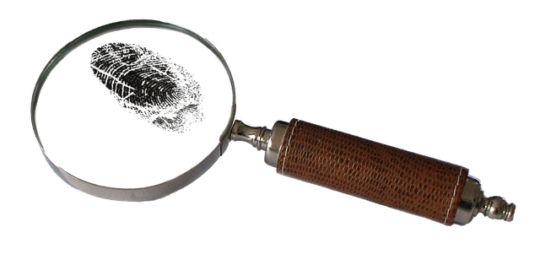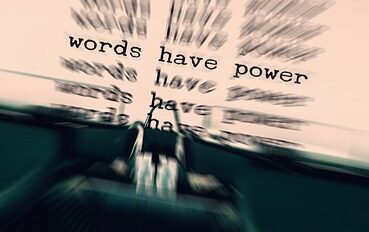Writing the Perfect Non-Fiction Closing Statement: Tips and Tricks From an Expert
Have you ever struggled to write the perfect conclusion for your non-fiction piece? If so, you’re not alone! Crafting a solid and effective closing statement can be daunting, but it doesn’t have to be.
With the right tips and tricks from an expert, you can create a powerful conclusion that will leave your readers wanting more.
In this article, you’ll learn how to write the perfect non-fiction closing statement, including the importance of summarizing your main points and reinforcing your thesis. You’ll also discover the art of weaving in a call to action and creating a sense of closure. With these tips and tricks, you’ll be able to write a strong and effective conclusion that will leave your readers satisfied and connected to your writing.
What is a closing statement?
A closing statement is your conclusion – a summary of the arguments you’ve examined in your well-considered inquiry, providing an answer to the central question of the piece.
However:
It’s almost impossible to write a strong closing statement unless you have:
- A clear and distinct title examining a central question
- A digestible opening statement, driving the reader to continue reading
- A collection of balanced arguments, exploring the central question from a range of perspectives, forming the body of the non-fiction piece
So, your opening statement lays out your intentions for the piece. And the body of your non-fiction piece will explore the central question from various perspectives.
And the closing statement ties all of those arguments together.
Why is a strong conclusion important?
A strong closing statement comes from a strong opener
Think about why you might want to read a piece of non-fiction writing. Often, your opening statement enthuses the reader to keep reading – it promises an interesting, intelligent, and stimulating examination of your central question.
So, when writing an opening statement, consider what you want your audience to DO after reading it. Are you trying to convince your reader of something? Perhaps you want to address a misapprehension?
In some ways, it’s easy to make promises at the beginning of your piece. And that’s what an opening statement is all about: teasing the reader to want to spend time with your non-fiction piece.
But:
Can you maintain the pace and enthusiasm through the body of the text?
A strong conclusion is the payoff
If your central question is clear and the body of your work is balanced, well-written, and relevant, then your strong conclusion is the payoff.
You’ll feel cheated if there’s no firm conclusion – you’ll feel like you’ve wasted your time reading the work.
And your reader is less likely to trust you when it comes to your subsequent non-fiction work.
So, a strong conclusion makes your writing worth reading. It helps the reader feel like they’ve made a good decision to read your piece. And, hopefully, they’ll have learned something along the way (confirmed within your closing statement).
So, know what you want to say.
Writing an academic closing statement

Academic writing is complex in syntactical structure, with many LONG sentences and paragraphs that can run into pages. So, reading an academic paper requires a tremendous amount of concentration.
And this is why it’s ESSENTIAL to write a strong closing argument – your tutor may read your conclusion first!
Yes, you have it from the horse’s mouth – sometimes when marking a paper, you look at the student’s conclusion first. This is because marking an academic document requires several readings to digest the arguments and the points presented, so reading the closing statement first is a good shortcut.
So, ensuring you have a strong closing statement is essential to achieving a high grade – if the marker understands your conclusion, they can consider each angle of your argument leading to that conclusion.
How to write a strong closing argument
A strong closing argument is a summary of everything previously presented. It offers a value judgment based on the balance of your ideas, from the opening statement to the body of the piece.
Let’s consider a legal closing argument – how a lawyer might draw the evidence together to make an ultimate, persuasive argument to convince the jury that their client is innocent (or that the defendant is guilty!).
How to write a closing statement – the legal way
The trial attorney delivers the closing statement at the end of a criminal case once the evidence is on the table, taking into account expert opinions and the witness testimony.
The closing statement is the final opportunity for the attorney to address the jury and the judge, so it’s essential that the jury understands the final closing argument.
How to compile a legal closing statement
A strong closing statement is based on the evidence presented in court, so taking notes during a trial is essential. This is the equivalent of a non-fiction writer planning out their piece before they start writing, ensuring they have the:
- Central question
- The subheadings prompting each argument
- Brief details they’re going to cover under each subheading
Good attorneys prepare their closing statements at the end of the trial, making notes along the way and having listened to both sides of the case.
Write an outline for your closing statement
Put some bullet points together – facts and arguments that draw you toward a clear conclusion.
Once you have your bullet points, use simple language to summarise your argument, as stated in the body of the text.
And then, balance those arguments to draw toward your conclusion.
Your structure could follow:
Review your case
A good lawyer reviews the salient points to remind the jury and judge of their theory of the case.
Review your evidence

Of course, as a non-fiction writer, you’re likely to have a biased view of the outcome you want to reach.
In law, you’d remind the jury about the facts you promised in the opening statement, then a step-by-step review of the facts supporting your theory.
You’d consider:
- Your client’s story
- The damaging testimony
- The outcome of the cross-examination and the other side of the story
- The key elements of the opponent’s case, as well as your case
A lawyer would spend time to explain and argue the story, using words that evoke emotional responses in the jury. They build a defense from their outline, which draws the jury closer to a favorable verdict.
Analogise
A closing attorney might review a civil case, a mock trial, or even use examples from literature – from Shakespeare or the bible – to compare their case with the outcome of another.
In non-fiction writing, it’s good practice to begin your research from a broad standpoint – exploring and seriously considering other arguments. If you just begin with an unshakeable verdict and work backward to reinforce that singular perspective, your conclusion becomes less credible.
Attack the alternatives
A good, balanced argument needs context; it’s essential that you’ve done your research and are aware of the counterarguments.
In court, the lawyer would attack and undermine the opposition’s case. But, be aware of discounting the counterarguments without consideration – that weakens your conclusion.
Point out the discrepancies in other theories – but make sure you can substantiate your viewpoint.
Conclude
Having assessed the evidence and the counterarguments, draw your piece to a conclusion that satisfies the central question without reasonable doubt.
Often, non-fiction writers get to the end of their piece and drift off to another conclusion without readdressing the central question.
So, always remind yourself what you set out to achieve before you draw a conclusion.
Strong closing statements need a Call To Action
Consider what you want your reader to DO after reading your non-fiction closing statement. In the lawyer’s case, they want the jury’s attention, they hope the jury understand the facts as presented, and they want a favorable verdict – the right person proven guilty (or otherwise).
Are you aiming to change the reader’s mind about something? Then, you need to be convincing in your representation of the evidence.
Do you want your reader to:
- Join you?
- Agree with you?
- Challenge you?
- Share your findings?
Cascadia wants your arguments!
If you’re a non-fiction writer with a thorough base in broad research, we’d love to hear from you. We’re looking to support non-fiction writers from all backgrounds looking to make a living by sharing their work and developing a broad audience.
Get in touch. We’d love to hear from you.

Harry Wallett is the Managing Director of Cascadia Author Services. He has a decade of experience as the Founder and Managing Director of Relay Publishing, which has sold over 3 million copies of books in all genres for its authors, and looks after a team of 50+ industry professionals working across the world.
Harry is inspired by the process of book creation and is passionate about the stories and characters behind the prose. He loves working with the writers and has shepherded 1000s of titles to publication over the years. He knows first-hand what it takes to not only create an unputdownable book, but also how to get it into the hands of the right readers for success.
Books are still one of the most powerful mediums to communicate ideas and establish indisputable authority in a field, boosting your reach and stature. But publishing isn’t a quick and easy process—nor should it be, or everyone would do it!
A professional grade book takes 250+ individual tasks to complete. Cascadia is an expert in every single one of them. Do you want to harness our expertise to launch your book into the stratosphere? Chat with us!








Leave a Reply